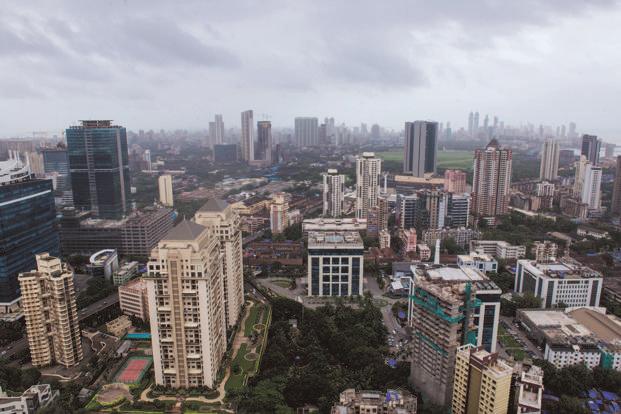

India’s real estate sector witnessed some significant developments over the past year-and-a-half. These have changed the face of the industry and augur well for it in the long run. The sector has become more transparent and organized owing to recent policy changes and consumers are better off for these.
The reforms began in May 2016, when the Real Estate (Regulation and Development) Act 2016 (RERA) came into force. The Act came into full effect from May 2017, bringing unprecedented levels of transparency into real estate projects. RERA promises to minimize delays in projects, weed out unscrupulous developers, and provide homebuyers with detailed information on the specifications and the progress of the projects they invest in.
RERA was followed by the introduction of the goods and services tax (GST), which rolled many different taxes into one. Until then, both consumers and developers had to pay multiple, and often varying taxes, which caused confusion. GST has come as a relief for both, by bringing clarity into the process. Moreover, it will lower the cost of construction, and bring more liquidity into the market.
The sector will also benefit from the amendments that were made late in 2016 to the Benami Transactions Prohibition Act. This, coupled with the central government’s stated intent to make Aadhaar linkage compulsory for all property transactions, will help in curbing malpractices and stopping the inflow of black money into real estate.
All these developments are highly significant. They will not only bring transparency and accountability, but also consolidation in their wake. Developers need to be sufficiently funded to achieve RERA compliance. Small or cash-starved developers will probably have no choice but to partner with larger, established players to survive. Moreover, unscrupulous developers—big or small—will have no place to hide in the transparent environment that RERA will usher into the industry. The real estate sector will be institutionalized, and probably have fewer—but larger and more reliable—developers in the years to come.
As the industry adapts to all these developments and trends, it is likely that the residential real estate segment will pick up in the first half of 2018. Home loan interest rates have gradually been decreasing over the past few years, and banks and financial institutions are offering varied, attractive schemes to incentivize customers, particularly for ready-to-move-in properties. The recapitalization of banks will also rejuvenate the banking sector and give a boost to lending. This will spur healthy competition between different actors and ultimately result in cheaper loan options for consumers. The Reserve Bank of India had slashed key interest rates by 25 basis points (a basis point is one hundredth of a percentage point) in August, and kept the repo rate unchanged in December. This, too, will help in lowering interest rates on home loans.
Home loan rates apart, the other major factor that could give a boost to real estate in the near future is affordable housing. In 2017, the government tried to incentivize affordable housing with renewed zeal. The guidelines of the Pradhan Mantri Awas Yojana (urban) (PMAY) were amended to encourage more millennials—married or single—to invest in property. Even unmarried children of a household are now eligible to apply for loans under PMAY. The government is trying to attract both middle-income and low-income groups to this segment.
In September, the central government extended, under PMAY, the benefit of interest subsidy on home loans for households in the middle-income group. This scheme was originally scheduled to end in December, but has now been extended till March 2019. In November, the cabinet approved increasing the carpet area of houses eligible for interest subsidy under this scheme. Consumers from economically weaker sections and low-income groups, for their part, are eligible for an interest subsidy at the rate of 6.5% for a tenure of 20 years, or during the tenure of the loan, whichever is lower.
Affordable housing, however, can achieve the desired levels of momentum and growth much faster with the participation of the private sector, which has shied away from it so far for several understandable reasons. In a much-awaited move to change this situation, the Union budget for 2017–18 granted infrastructure status to the affordable housing segment. More recently, the ministry of housing and urban affairs introduced as many as eight public-private-partnership options to encourage private investments in affordable housing projects. These new policies, if implemented well, could give a much-needed boost to this segment and make it a powerful growth driver for the real estate sector.
A boom in affordable housing and the resulting construction and allied jobs can help make a significant dent in the malaise of joblessness. It can also have a multiplier effect on the national gross domestic product, and boost the demand for different categories of products and services. India’s real estate is transitioning to a new era after what has been a rather eventful year. And the prospects for homebuyers, developers, and the financial ecosystem are brighter than they have ever been.
[“Source-livemint”]




